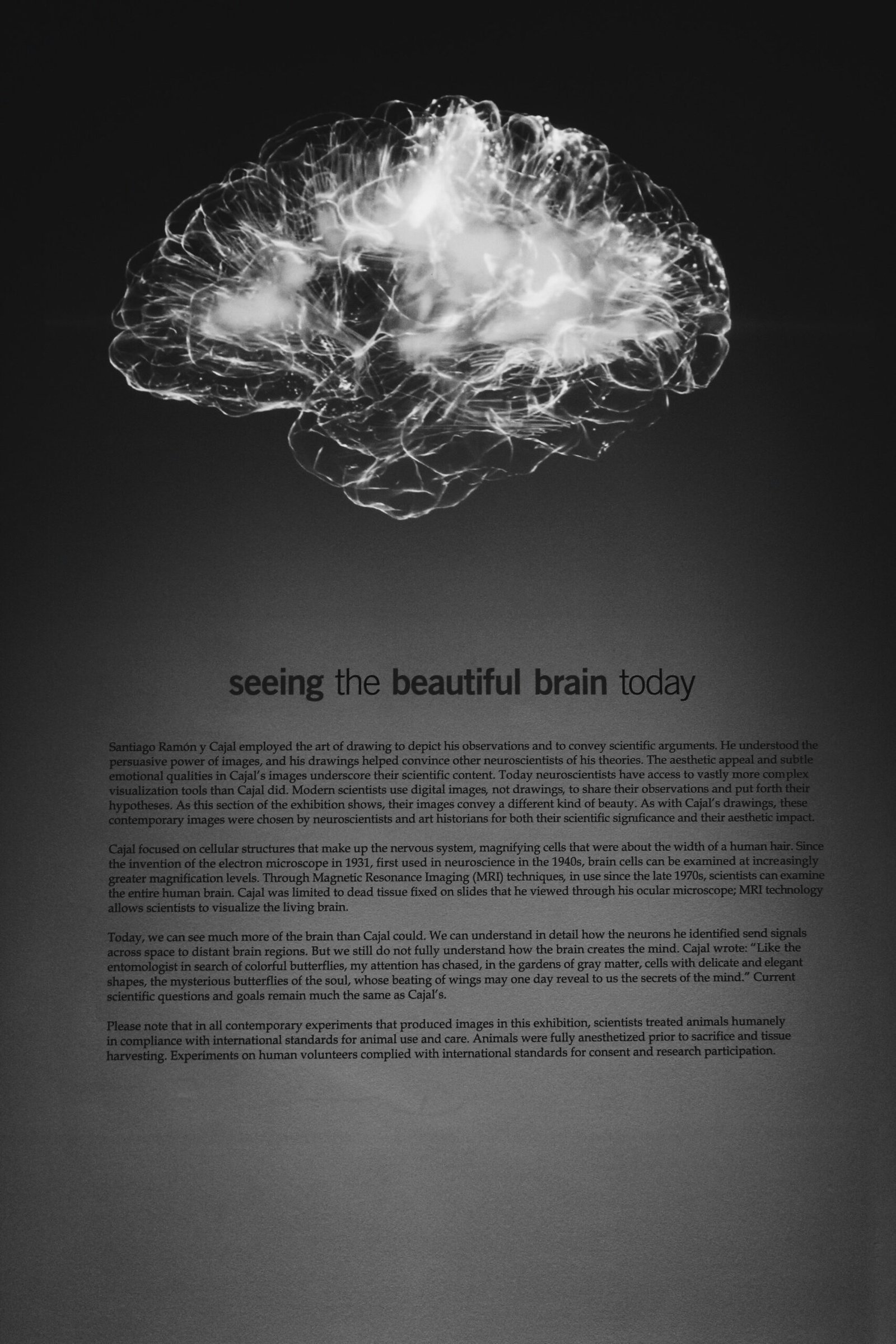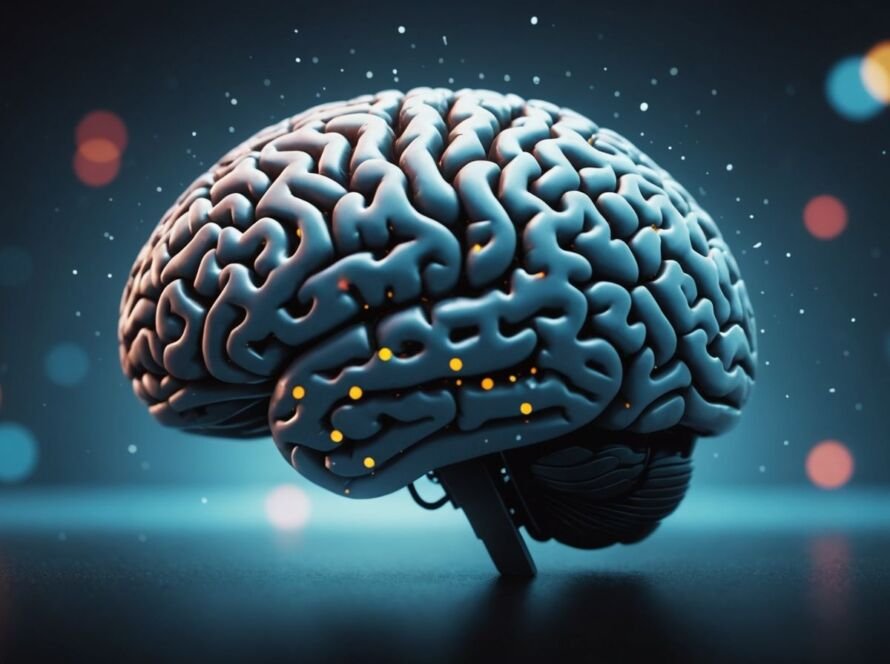
Zeitgeist School of Neuroscience
Neuroscience, a multifaceted field of study, delves into the complexities of the brain and its profound impact on behavior and cognitive processes. By exploring the biological mechanisms underlying how the brain functions, neuroscience aims to unravel the intricate web of neurons and their interactions that govern everything from basic reflexes to higher-order thinking and emotional responses. This discipline is pivotal in advancing our understanding of how we perceive, think, and act, providing critical insights that can inform various applications in medicine, psychology, and even artificial intelligence.
The significance of a neuroscience degree lies in its interdisciplinary nature, integrating principles from biology, psychology, and cognitive science. This convergence allows for a holistic approach to studying the nervous system, encompassing cellular and molecular neurobiology, synaptic transmission, and neural circuitry. By examining the structural and functional aspects of the brain, students and researchers can better comprehend how neural networks process information, adapt through learning and memory, and contribute to the manifestation of behaviors and mental states.
In recent years, the field of neuroscience has expanded to include cutting-edge technologies and methodologies, such as neuroimaging, electrophysiology, and computational modeling. These advancements have revolutionized our ability to visualize and measure brain activity, fostering a deeper and more nuanced understanding of neural dynamics. Consequently, a neuroscience degree equips individuals with the skills to employ these sophisticated tools, facilitating groundbreaking research and innovations that can address neurological disorders, mental health issues, and cognitive impairments.
Ultimately, neuroscience serves as a bridge between the biological sciences and the study of behavior, offering invaluable perspectives on the fundamental processes that underlie human experience. By embracing the interdisciplinary essence of this field, aspiring neuroscientists can contribute to a richer comprehension of the brain, paving the way for scientific and clinical advancements that enhance human well-being.
The History and Evolution of Neuroscience
The history of neuroscience is a testament to the profound curiosity humans have about the brain and its functions. The roots of this scientific discipline can be traced back to ancient civilizations, where early anatomical studies began to unravel the mysteries of the human body. Ancient Egyptian papyri from as early as 1700 BCE document some of the earliest known references to the brain. However, it wasn’t until the classical Greek period that philosophers like Hippocrates and Galen began to speculate about the brain’s role in cognition and behavior.
During the Renaissance, the detailed anatomical drawings of Andreas Vesalius in the 16th century laid the groundwork for a more systematic study of the brain. The Enlightenment period saw the advent of experimental physiology, with Luigi Galvani’s experiments on frog legs in the late 18th century establishing the foundation for the concept of bioelectricity. This period marked a significant shift towards understanding the brain as an electrical organ.
The 19th century brought about significant advancements with the work of Santiago Ramón y Cajal, often referred to as the father of modern neuroscience. His pioneering use of the Golgi staining method revealed the intricate structure of neurons, leading to the development of the neuron doctrine. This doctrine posited that neurons are the fundamental units of the brain, a concept that remains central to neuroscience today.
The 20th century witnessed exponential growth in the field, driven by technological advancements. The invention of the electroencephalogram (EEG) by Hans Berger in the 1920s allowed for the measurement of electrical activity in the brain. Later, the development of neuroimaging techniques, such as computed tomography (CT) and magnetic resonance imaging (MRI), revolutionized our ability to study the living brain in unprecedented detail. These tools have enabled scientists to explore the neural correlates of behavior and cognition more deeply.
Pioneering scientists, from Wilder Penfield’s cortical mapping to Brenda Milner’s work on memory, have significantly contributed to our current understanding. Today, a neuroscience degree encompasses an interdisciplinary approach, integrating biology, psychology, and technology to decipher the complexities of the brain and behavior. The evolution of neuroscience continues to be driven by innovation and discovery, promising new insights into the brain’s profound mysteries.
Core Concepts in Neuroscience
Understanding the core concepts of neuroscience is essential for anyone pursuing a neuroscience degree or interested in the intricacies of brain function and behavior. At the heart of neuroscience lies the neuron, the fundamental building block of the nervous system. Neurons are specialized cells responsible for transmitting information throughout the brain and body. They consist of three main parts: the cell body, dendrites, and axon. The cell body contains the nucleus and other organelles, dendrites receive signals from other neurons, and the axon transmits signals to other neurons, muscles, or glands.
Communication between neurons occurs at synapses, where the axon terminal of one neuron meets the dendrite of another. This process involves neurotransmitters, which are chemical messengers that transmit signals across the synaptic gap. Key neurotransmitters include dopamine, serotonin, and acetylcholine, each playing a distinct role in regulating mood, cognition, and motor function. For instance, dopamine is crucial for reward and motivation, while serotonin impacts mood and emotion.
Neural circuits are networks of interconnected neurons that work together to perform specific functions. These circuits are fundamental to understanding how the brain processes information and controls behavior. For example, the cortico-basal ganglia-thalamo-cortical loop is a neural circuit involved in motor control and learning. Disruptions in these circuits can lead to neurological disorders such as Parkinson’s disease and schizophrenia.
Another vital concept in neuroscience is neuroplasticity, the brain’s ability to reorganize itself by forming new neural connections throughout life. Neuroplasticity allows the brain to adapt to new information, experiences, and injuries. This adaptability is particularly evident during childhood but continues to some extent in adulthood. For example, learning a new skill, such as playing a musical instrument, can lead to structural and functional changes in the brain, enhancing cognitive and motor abilities.
Mastering these core concepts provides a solid foundation for further exploration into the complexities of the nervous system. A neuroscience degree offers comprehensive insights into these topics, equipping students with the knowledge to advance in research, clinical practice, or various interdisciplinary fields.
Techniques and Technologies in Neuroscience Research
Neuroscience research employs a myriad of sophisticated techniques and technologies to unravel the complexities of the brain and behavior. Among the most pivotal methods are neuroimaging techniques, such as Magnetic Resonance Imaging (MRI) and functional MRI (fMRI). These advanced imaging tools provide detailed snapshots of the brain’s structure and function, allowing researchers to observe brain activity and connectivity in real-time. MRI and fMRI have become indispensable in diagnosing neurological conditions and understanding cognitive processes.
Electrophysiological methods, particularly Electroencephalography (EEG), play a crucial role in neuroscience research. EEG measures electrical activity in the brain through electrodes placed on the scalp, offering insights into neural oscillations and brainwave patterns. This non-invasive technique is instrumental in studying brain dynamics, especially in relation to sensory processing, attention, and sleep.
Emerging tools like optogenetics represent a revolutionary leap in neuroscience. Optogenetics involves the use of light to control neurons that have been genetically modified to express light-sensitive ion channels. This precise control allows researchers to manipulate specific neural circuits with unprecedented accuracy, advancing our understanding of brain functions and behaviors at the cellular level.
In addition to these methods, animal models remain a cornerstone of neuroscience research. Animal studies provide critical insights into the fundamental mechanisms underlying neural development, function, and disorders. Rodents, particularly mice and rats, are commonly used due to their genetic similarity to humans and the ease with which their genomes can be manipulated.
Computational neuroscience is another burgeoning field that leverages mathematical models and simulations to interpret complex neural data. By integrating empirical data with theoretical frameworks, computational approaches help elucidate the principles governing brain function and contribute to the development of artificial intelligence systems.
Overall, the integration of these diverse techniques and technologies in neuroscience research is essential for advancing our understanding of the brain. For those pursuing a neuroscience degree, familiarity with these methodologies is crucial, as they form the bedrock of contemporary research and clinical practice in the field.
Neuroscience and Behavior: Linking Brain Function to Actions
Neuroscience, the scientific study of the nervous system, plays a crucial role in elucidating the intricate relationship between brain function and behavior. Understanding this connection allows us to comprehend how various cognitive processes, such as memory, attention, and decision-making, are orchestrated within the brain. Behavioral paradigms are essential tools in this endeavor, providing structured methods to study these cognitive functions and their underlying neural mechanisms.
Memory, a fundamental cognitive function, is extensively studied through various behavioral paradigms such as the Morris water maze and delayed match-to-sample tasks. These paradigms help identify specific brain regions, like the hippocampus, that are pivotal in encoding, storing, and retrieving information. Attention, another critical cognitive process, can be examined through paradigms such as the Stroop task and the Posner cueing task. These studies often highlight the role of the prefrontal cortex and parietal lobes in filtering and prioritizing sensory information, enabling individuals to focus on relevant stimuli while ignoring distractions.
Decision-making, a complex cognitive function, is often explored using tasks like the Iowa Gambling Task and the Ultimatum Game. These paradigms reveal the intricate interplay between the prefrontal cortex, which is involved in evaluating risks and rewards, and the limbic system, which processes emotional responses. Such studies underscore the importance of neural circuits in guiding choices and behaviors based on past experiences and future predictions.
Beyond cognitive functions, neuroscience also sheds light on emotional and social behaviors. Paradigms like the fear conditioning and social interaction tests provide insights into the neural substrates of fear, anxiety, and social bonding. These studies often implicate brain regions such as the amygdala, which is crucial for emotional processing, and the anterior cingulate cortex, which is involved in social cognition and empathy.
In conclusion, a neuroscience degree equips individuals with the knowledge and tools to investigate the complex links between brain function and behavior. By employing diverse behavioral paradigms, neuroscientists can unravel the neural underpinnings of cognitive, emotional, and social behaviors, contributing to a deeper understanding of the human brain and its myriad functions.
Neuroscience in Health and Disease
The field of neuroscience plays a pivotal role in understanding and treating various neurological and psychiatric disorders. By exploring the complexities of the brain and nervous system, researchers and clinicians can develop more effective therapies for conditions that significantly impact individuals and society.
Alzheimer’s disease, a leading cause of dementia, is characterized by progressive memory loss and cognitive decline. Neuroscientists are currently investigating the molecular mechanisms behind Alzheimer’s, focusing on amyloid-beta plaques and tau protein tangles. Emerging treatments aim to slow disease progression by targeting these pathological hallmarks through novel drugs and therapeutic approaches.
Parkinson’s disease, another debilitating neurodegenerative disorder, affects motor function due to the loss of dopamine-producing neurons in the brain. Current research in neuroscience seeks to understand the genetic and environmental factors contributing to Parkinson’s. Therapeutic strategies include deep brain stimulation, which has shown promise in alleviating symptoms, and ongoing trials of gene therapy and neuroprotective agents.
Depression, a prevalent psychiatric disorder, is associated with dysregulation of neurotransmitters such as serotonin, norepinephrine, and dopamine. Neuroscientists are utilizing advanced imaging techniques and genetic studies to unravel the underlying causes of depression. Treatments range from pharmacological interventions, like selective serotonin reuptake inhibitors (SSRIs), to innovative approaches such as transcranial magnetic stimulation (TMS) and ketamine infusion therapy.
Schizophrenia, a complex psychiatric condition, involves disruptions in thought processes, perceptions, and emotional responsiveness. Research in neuroscience has identified abnormalities in brain structure and function, particularly in regions responsible for cognition and emotion regulation. Antipsychotic medications, cognitive behavioral therapy (CBT), and psychosocial interventions form the cornerstone of treatment, with ongoing studies exploring the potential of novel pharmacological targets.
Overall, a neuroscience degree equips professionals with the knowledge and skills to advance the understanding and treatment of these and other neurological and psychiatric disorders. As research progresses, the integration of neuroscience into healthcare continues to offer hope for improved diagnostic methods and therapeutic options, ultimately enhancing patient outcomes and quality of life.
Ethical Considerations in Neuroscience
As the field of neuroscience advances, ethical considerations become increasingly paramount. One significant area of concern is the use of animals in research. While animal models have been instrumental in providing insights into brain function and neurological diseases, their use raises questions about the balance between scientific progress and animal welfare. Ethical guidelines are essential to ensure that animal suffering is minimized and that the research is justified by its potential benefits.
Another critical issue is the implications of neurotechnologies for privacy and consent. Innovations such as brain-computer interfaces and neuroimaging techniques offer unprecedented access to the workings of the human brain. However, these technologies also pose risks to personal privacy. For instance, the ability to decode thoughts and intentions from brain activity could lead to unauthorized surveillance or misuse of sensitive information. Ensuring informed consent and robust data protection measures is crucial in safeguarding individuals’ rights.
The ethical challenges extend to the realm of brain enhancement. Techniques such as cognitive enhancement drugs and neural stimulation devices promise to boost mental capabilities, but they also raise questions about fairness, coercion, and the nature of human identity. Who gets access to these enhancements, and does their use create an unfair advantage? Moreover, there is the concern of coercion, where individuals might feel pressured to use these technologies to remain competitive in academic or professional environments.
Neuroethics, a sub-discipline of ethics, specifically addresses these concerns, providing a framework for navigating the moral landscape of neuroscience research and applications. It underscores the importance of considering the broader social, legal, and philosophical implications of neuroscience. As the field continues to evolve, ongoing dialogue among scientists, ethicists, policymakers, and the public will be essential in addressing the complex ethical issues that arise.
The Future of Neuroscience
The field of neuroscience is on the cusp of transformative breakthroughs, driven by rapid advancements in technology and an ever-deepening understanding of the brain’s intricate workings. As researchers continue to unravel the complexities of neural networks and brain functions, several emerging trends promise to redefine the landscape of neuroscience in the coming years.
One of the most promising directions is the integration of artificial intelligence (AI) with neuroscience. AI algorithms are increasingly being used to analyze vast datasets of neural activity, identifying patterns and correlations that were previously indiscernible. This synergy not only accelerates the pace of discovery but also enhances the precision of neuroscientific research. For instance, machine learning models are being employed to predict neurological disorders, offering the potential for earlier diagnosis and more effective interventions.
Another groundbreaking area is the development of brain-computer interfaces (BCIs). These devices create direct communication pathways between the brain and external devices, enabling new forms of interaction with technology. BCIs hold significant promise for individuals with disabilities, offering them unprecedented control over prosthetic limbs, communication devices, and even computer systems through thought alone. As BCI technology matures, it may also pave the way for novel therapeutic strategies for conditions such as stroke, spinal cord injuries, and neurodegenerative diseases.
Personalized medicine is another frontier poised to revolutionize neuroscience. Advances in genomics and neuroimaging are enabling more tailored approaches to treatment, based on an individual’s unique genetic makeup and neural architecture. This shift towards precision medicine promises to enhance the efficacy of interventions for psychiatric and neurological disorders, minimizing side effects and optimizing outcomes.
Ongoing research and innovation in these areas suggest a future where the mysteries of the brain are increasingly demystified, leading to groundbreaking applications that enhance human health and capabilities. With a neuroscience degree, professionals are well-positioned to contribute to and benefit from these exciting developments, playing a pivotal role in shaping the future of brain science.

